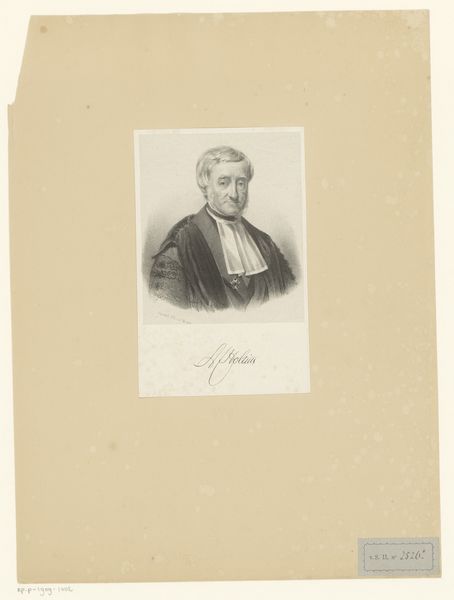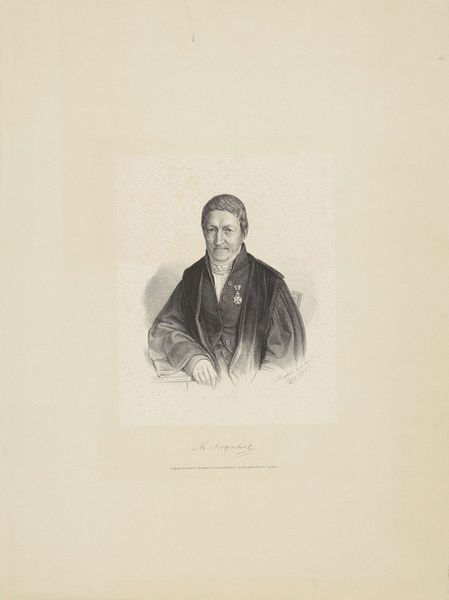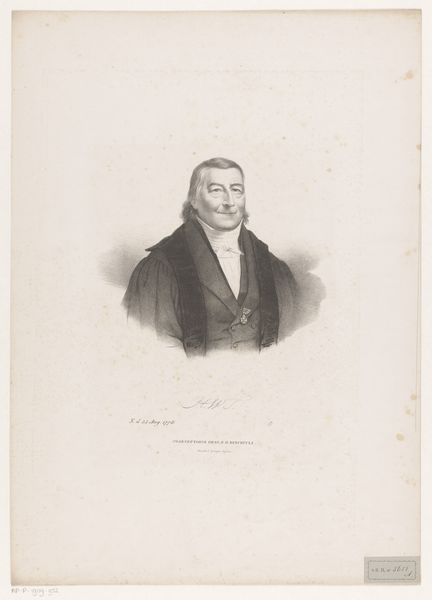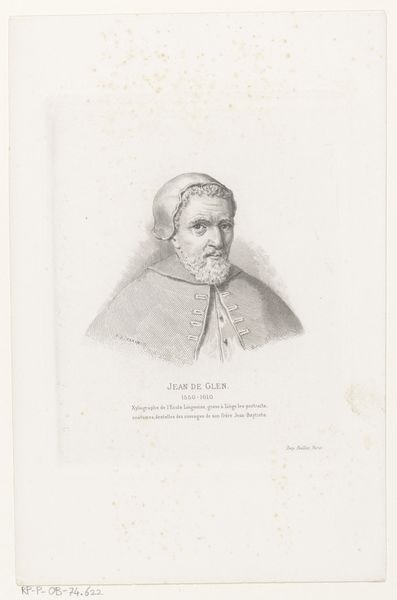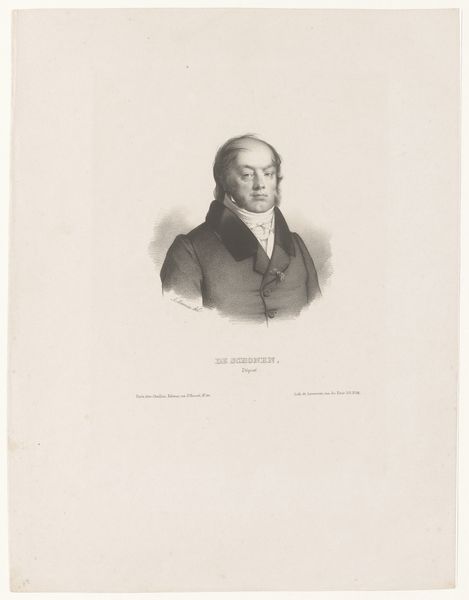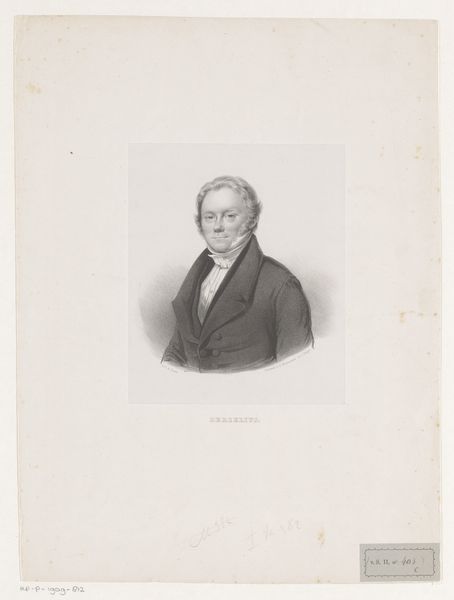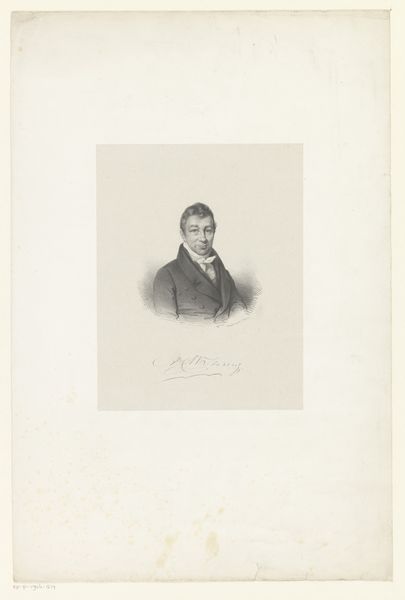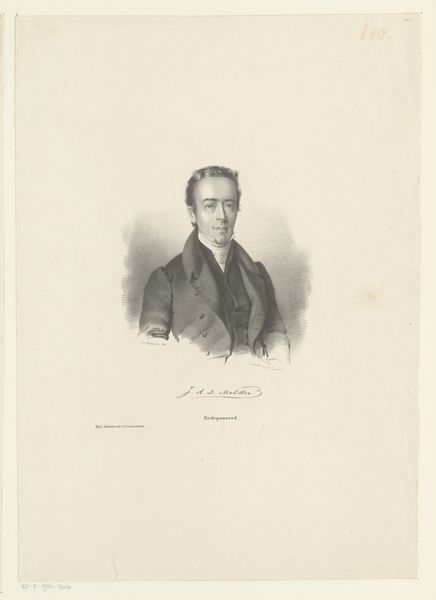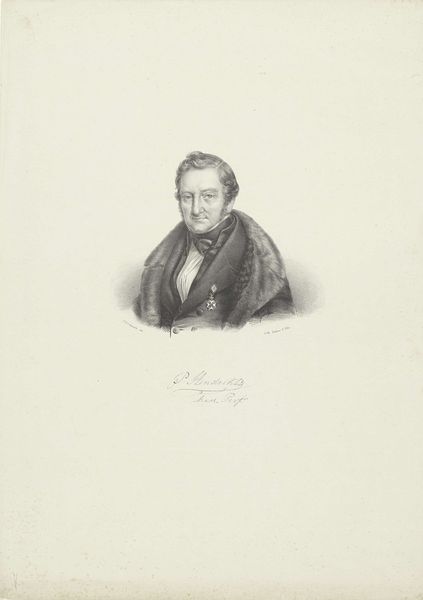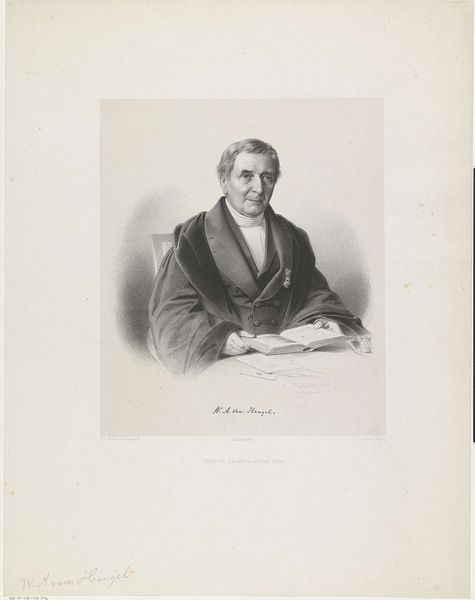
drawing, pencil, graphite
#
portrait
#
pencil drawn
#
drawing
#
pencil sketch
#
romanticism
#
pencil
#
graphite
#
realism
Dimensions: height 485 mm, width 315 mm
Copyright: Rijks Museum: Open Domain
Curator: Before us is a drawing entitled "Portret van Joan Frederik van Oordt," attributed to Jan Ensing and dating from 1829 to 1844. It’s currently housed here at the Rijksmuseum. Editor: My first impression is of subdued elegance, achieved with remarkably simple means. The portrait's delicate pencil lines capture a profound sense of character and composure. Curator: Indeed. The work, executed in graphite, emphasizes line and tone to create depth. As a drawing, it is relatively accessible in terms of material, which raises interesting questions. How does the accessibility of pencil as a medium change the role and perception of portraiture in this era? Was portraiture in graphite more accessible across social strata? Editor: Focusing purely on the form, I am fascinated by how Ensing uses shading to model van Oordt's face, lending it a palpable sense of volume. The highlights on his forehead and cheekbone create a focal point. The sharp contrast of the white collar with the dark jacket frames his face with geometric simplicity. Curator: I'd also suggest that the detailed depiction of his attire—the high collar, jacket, and especially the medal—points to the importance of social markers in portraiture during this period. What was van Oordt's position and how did Ensing tailor the artwork to broadcast it? Editor: While I understand the importance of social markers, it's equally compelling how the artist utilizes line and texture to convey personality. The meticulous hatching technique adds texture to van Oordt’s coat. The subtle rendering of the eyes, slightly soft, imparts a sense of kindness. Curator: Consider the labour and craftsmanship involved in creating such a lifelike portrait. Who was commissioning this type of work? How was the process structured? By understanding the system that produces these objects, we gain insight into 19th century societal structures and the very notion of representation. Editor: Perhaps. But, setting aside the production logistics, the strength lies in the drawing's intimate immediacy. Ensing captures not just likeness, but an essence. The subdued palette serves only to amplify our focus on form. Curator: It prompts consideration of the evolving market for art during that period. This provides an interesting counterpoint to painting. Editor: Precisely, seeing how these formal elements contribute to the whole is key to unraveling a richer viewing experience.
Comments
No comments
Be the first to comment and join the conversation on the ultimate creative platform.



